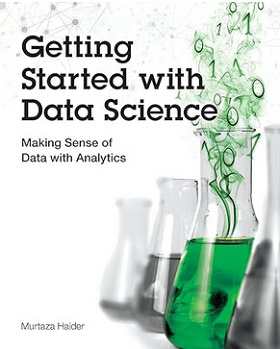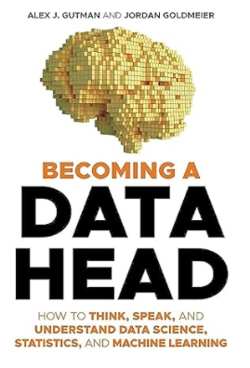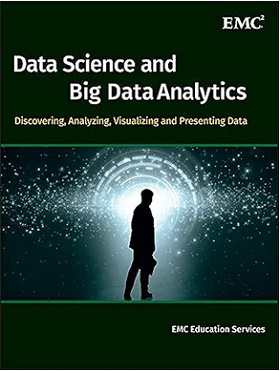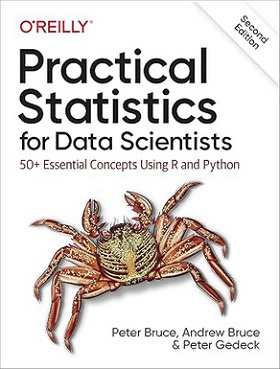| Best Books For Data Science |
| Written by Kay Ewbank | ||||
| Monday, 25 November 2024 | ||||
Page 1 of 3 Is data science a separate topic to statistics? The more mathematically-minded members of our team of reviewers would probably say not, and would definitely say data scientists should be statisticians first and foremost. That said, many people want to work with data in a scientific way without necessarily having a background in statistics. We start this bookshelf with some titles aimed at general data science, before moving on to titles concentrating on the R programming language. The team of I Programmer book reviewers read a lot of programming titles, and our programmer's bookshelf section provides a guide to those that we thought were among the best, with recommendations of the books you might find helpful at different stages in your personal development. If you want to read more of the original review click on the link in each title. Clicking on the book jacket in the text will take you to the book's page on Amazon and the thumbnails in side panel are to the Kindle samples on Amazon. If you do decide to make a book purchase accessing Amazon from a link on I Programmer means that we are credited with a few cents - so thanks to all of you who support us in this way.
Getting Started With Data ScienceAuthor: Murtaza Haider This book aims to make data analytics more accessible by using interesting examples, warranting a 4.5 star rating in our review, which concluded that readers who've enjoyed books such as Freakonomics or Outliers will feel at home reading this book as it uses a similar approach; take an interesting question such as 'Does the higher price of cigarettes deter smoking?', and use that as the basis for some data analysis. The aim is to teach you how to do your own analyses. Haider works through the examples in R, Stata, SPSS and SAS. Within the book the examples are worked mainly in R, and one of the other languages. The code for the other languages is available for download from the IBM Press website, along with details of how to use it.
Overall, this is a book that is accessible, interesting and still manages to introduce the statistical techniques you need to use for real data analytical work. A good way to get into data analysis. Becoming A Data HeadAuthor: Alex J. Gutman and Jordan Goldmeier
The authors do a good job of introducing ideas about statistics and data analysis in a logical way that explains why a technique is needed, and by the end of the book the reader has absorbed the essentials for understanding data. Highly recommended. Data Science and Big Data AnalyticsAuthor: EMC Education Services
The subtitle is "Discovering, Analyzing, Visualizing and Presenting Data", and the book aims to teach about big data analytics, though the techniques discussed are well known statistical methods. There are individual chapters on the most commonly used techniques, each chapter covering the key concepts of the technique, the principles behind it, R code using it, and sample exercises illustrating its use. Practical Statistics for Data ScientistsAuthor: Peter Bruce and Andrew Bruce The idea of this book is to introduce data scientists to what you might call classical statistics, and while Mike James was worried by its subtitle "50 Essential Concepts" because of the smallness of the number, he found the book good enough to award it 4.5 stars, recommending it - with some reservations. Drawbacks included a lack of explanations of how things work, slight coverage of technicalities, and program snippets that are short and really just illustrations - you shouldn't buy the book if you are looking for code. Many very big topics are covered in a few paragraphs.
Mike ended his review saying he is still of the opinion that data scientists should be statisticians first, but if you disagree this will give you a glimpse of what lies on the other side of the divide. If you are a statistician then reading it might give you some idea of how the data scientists think about things. We reviewed the first edition of the book, which has now been updated with a second edition that the publishers say adds examples in Python, provides practical guidance on applying statistical methods to data science, tells you how to avoid their misuse, and gives you advice on what’s important and what’s not.
<ASIN: B092TSVZJ8> <ASIN: B00RXHVQF6> <ASIN: B08712TT3F> |
||||
| Last Updated ( Tuesday, 26 November 2024 ) |




